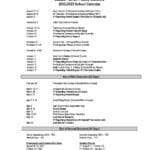Warmblood Fragile Foal Syndrome (WFFS) is a devastating genetic disorder that can tragically impact newborn foals. Understanding this condition, its inheritance pattern, available testing, and preventative strategies is crucial for responsible horse breeding, particularly within Warmblood and related breeds. This article provides a comprehensive overview of WFFS, empowering owners and breeders with the knowledge to protect future generations.
Understanding WFFS: A Genetic Deep Dive
WFFS, also known as Fragile Foal Syndrome Type I, is a fatal inherited connective tissue disorder. It’s caused by a mutation in the PLOD1 gene, which provides the blueprint for creating Lysyl Hydroxylase 1, a crucial enzyme involved in collagen production. Collagen acts as the body’s scaffolding, providing strength and structure to connective tissues like skin, tendons, and ligaments. The PLOD1 mutation disrupts this process, resulting in severely weakened connective tissues.
This genetic defect is inherited in an autosomal recessive pattern. This means a foal must inherit two copies of the mutated gene—one from each parent—to be affected by WFFS. If a foal inherits only one copy, it becomes a carrier, appearing healthy but capable of passing the gene to its offspring. This recessive nature underscores the importance of genetic testing.
Decoding the WFFS Gene
The PLOD1 gene is responsible for producing an enzyme vital for proper collagen formation. When this gene is mutated, the resulting enzyme is faulty, leading to weak and dysfunctional collagen fibers. This compromised collagen is the root cause of the severe symptoms seen in WFFS-affected foals. These foals experience a range of debilitating issues, including hyperextensible skin prone to tearing, joint laxity, and other connective tissue abnormalities, often resulting in premature birth or death shortly after birth.
| Feature | Description |
|---|---|
| Gene Name | PLOD1 |
| Inheritance | Autosomal Recessive – two copies of the mutated gene are required for the foal to be affected. |
| Effect | Disrupts collagen production, leading to weakened connective tissues. |
| Symptoms | Extremely fragile skin, joint laxity, hyperextensible limbs, other connective tissue abnormalities. |
| Testing | DNA tests can identify carriers and affected individuals. |
| Management | Careful breeding practices are crucial to avoid mating two carriers. |
| Ongoing Research | Scientists are continually working to further understand the complexities of WFFS, including how the mutated gene impacts collagen development and exploring potential treatment strategies for affected foals. |
While our understanding of WFFS has grown significantly, research continues to explore the nuances of this complex disorder. Scientists are investigating how the PLOD1 mutation affects collagen formation at a molecular level and are actively seeking potential therapies. Although there is currently no cure for WFFS, prevention through responsible breeding practices, guided by genetic testing, remains the most effective approach.
Interpreting a Positive WFFS Test
A “WFFS positive” test result indicates that a horse carries one copy of the mutated PLOD1 gene, making them a carrier. While these horses typically appear healthy, they can pass the mutated gene to their offspring. The risk arises when two WFFS-positive horses are bred. In such cases, there’s a 25% chance their foal will inherit two copies of the mutated gene and develop WFFS, a 50% chance the foal will be a carrier, and a 25% chance the foal will inherit two normal genes.
| Breeding Scenario | Possible Foal Outcomes |
|---|---|
| WFFS Positive x WFFS Positive | 25% Affected, 50% Carriers, 25% Normal |
| WFFS Positive x WFFS Negative | 0% Affected, 50% Carriers, 50% Normal |
| WFFS Negative x WFFS Negative | 0% Affected, 0% Carriers, 100% Normal |
Genetic testing plays a vital role in responsible breeding. By identifying carriers, breeders can make informed decisions to avoid mating two WFFS-positive horses, effectively preventing the occurrence of WFFS in foals. Ongoing research aims to further refine our understanding of WFFS and explore potential environmental factors that might influence disease severity.
Recognizing the Symptoms of WFFS
The clinical signs of WFFS in affected foals are often severe and heartbreaking. These symptoms stem from the defective collagen, which weakens connective tissues throughout the body.
- Skin Fragility: Foals with WFFS exhibit hyperextensible skin that tears exceptionally easily, even from minor friction. Wounds and lesions can occur before birth due to movement within the mare’s uterus.
- Joint Issues: Joint laxity is a prominent symptom, causing joints to be loose and unstable. This can lead to dislocations and difficulty standing or walking.
- Other Abnormalities: Affected foals may also have floppy or unusually shaped ears, spinal deviations, and other skeletal deformities. Internally, they may experience hemorrhages, hematomas, seromas, hydrops, and subcutaneous emphysema.
| Symptom | Description |
|---|---|
| Hyperextensible Skin | Extremely fragile, easily torn skin |
| Joint Laxity | Loose, unstable joints prone to dislocation |
| Ear Abnormalities | Floppy or misshapen ears |
| Skeletal Deformities | Spinal deviations and other skeletal issues |
| Hemorrhages/Hematomas | Internal bleeding and blood clots under the skin |
| Seromas | Fluid-filled pockets under the skin |
| Hydrops | Excessive fluid accumulation within the fetus |
| Subcutaneous Emphysema | Air trapped under the skin, creating a crackling sensation |
Premature birth is also common in WFFS-affected foals, further compounding their health challenges. The severity of these symptoms often necessitates euthanasia shortly after birth. While research continues to explore potential treatments, early detection through genetic testing and responsible breeding practices remain the most effective ways to prevent WFFS.
The Future of WFFS Prevention
Continued research and education are essential to eradicating WFFS. Scientists are actively investigating the genetic complexities of the disorder and searching for potential therapies, including gene therapies. While these advancements hold promise for the future, current prevention relies heavily on responsible breeding decisions guided by genetic testing. By testing breeding stock and avoiding mating two carriers, breeders can effectively eliminate the risk of producing WFFS-affected foals. This proactive approach is crucial for safeguarding the health and welfare of future horse generations. You can learn more about the alabama board of cosmetology. Explore the foundational principle of cognitive behavioral therapy at what principle underlies cognitive behavioral therapy.
- 2024-2025 Caddo Parish School Calendar: Key Dates and Information - November 22, 2024
- Caddo Parish Schools Calendar 2024-2025: Key Dates and Information for Parents & Students - November 22, 2024
- Discover Cornelia, Habersham County, Georgia: Small-Town Charm in the North Georgia Mountains - November 22, 2024















